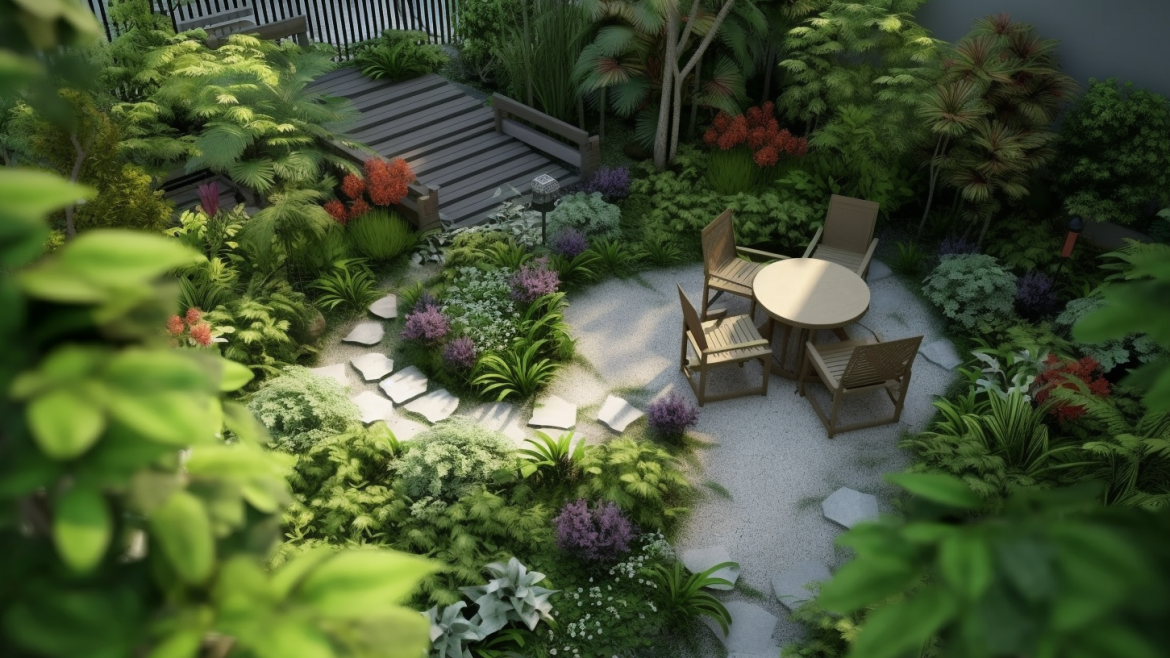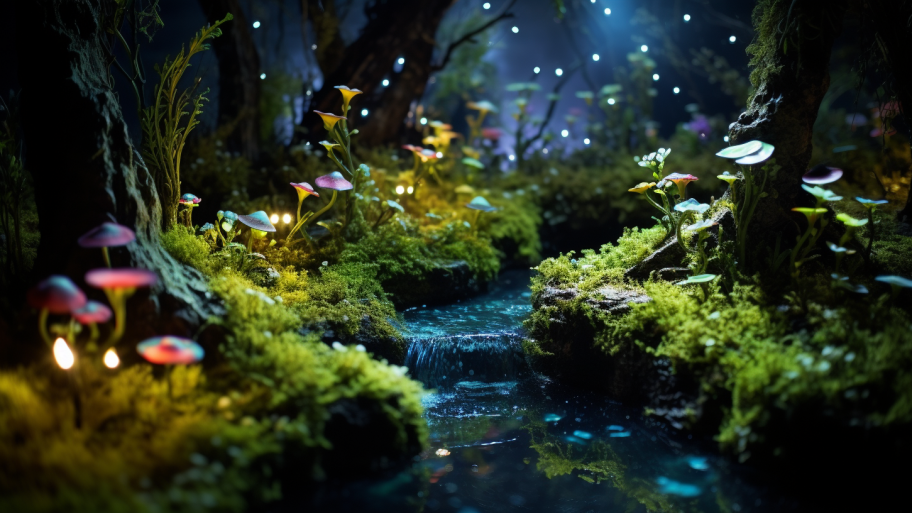In the clamor and chaos of modern life, finding a refuge of calm and tranquility is not just a luxury, but a necessity. Welcome to the world of therapeutic gardens, spaces designed not just for their aesthetic beauty, but for their capacity to soothe the mind and uplift the spirit.
Embracing the Narrative of Nature
Nature has always had a profound influence on the human psyche. Its rhythms and patterns, its intricate web of life, and its serene silence all tell a story – a narrative that transcends language and touches the deepest recesses of our minds. This narrative has the power to heal, to inspire, and to awaken a sense of connectedness within us.
In a world increasingly dominated by technology and urbanization, many of us have lost touch with this narrative. Our lives revolve around screens and concrete, leaving little room for the gentle whisperings of nature. Creating a garden dedicated to mental wellness is a way to rekindle this connection. It’s a way to bring the narrative of nature back into our lives and, in the process, nurture our mental and emotional wellbeing.
In the following sections, we’ll explore how you can create such a space, a refuge that resonates with the healing energies of nature. From understanding the role of specific flora to creating a multisensory experience, we’ll guide you in crafting a garden that not only soothes the senses but also nurtures the soul.
Planting Peace: The Role of Specific Flora
Not all plants are created equal. Some have a calming effect on the mind, others energize, while some are known for their therapeutic properties. Incorporating such plants into your wellness garden can greatly enhance its healing potential.
The lavender plant, for instance, is renowned for its soothing fragrance. It’s been used for centuries in aromatherapy to alleviate stress and promote sleep. The sight of a sunflower, with its vibrant yellow petals reaching towards the sky, can be an instant mood lifter. Chamomile, with its delicate, daisy-like flowers, is another wonderful addition to a wellness garden. Known for its calming effects, chamomile can be brewed into a tea that soothes the mind and body.
However, the choice of plants should ultimately resonate with your personal preferences and experiences. Perhaps the scent of jasmine reminds you of childhood summers, or the sight of marigolds evokes memories of your grandmother’s garden. Including plants that have a personal meaning for you can make your wellness garden truly unique and therapeutic.
Engaging the Senses: A Holistic Experience
A wellness garden is more than just a visual feast; it’s a multisensory experience. Every element of the garden, from the rustling of leaves to the feel of soil, from the scent of blooming flowers to the taste of fresh herbs, is a potential source of healing and relaxation.
Sound, for instance, can have a profound impact on our emotional state. The gentle hum of bees, the chirping of birds, or the rustling of leaves in the wind can be incredibly soothing. Incorporating elements such as wind chimes or water features can enhance the auditory experience of your garden.
Touch, too, plays a vital role in our connection with nature. The texture of tree bark, the smoothness of pebbles, or the coolness of metal garden ornaments can provide a grounding experience, connecting us to the present moment.
Taste is another sense that can be engaged in a wellness garden. Growing edible plants and herbs not only provides fresh produce but also creates a deeper connection with the food we consume. The act of picking a ripe tomato or plucking fresh mint leaves can be a simple yet profound pleasure.
The Green Connection: Biophilia and Ecotherapy
Biophilia, a term popularized by biologist Edward O. Wilson, refers to the innate human affinity for nature. This intrinsic connection has been shown to have a positive impact on mental health, a concept central to ecotherapy. Ecotherapy, or nature therapy, involves a variety of activities in natural settings to improve mental wellbeing. Gardening, forest bathing, and wildlife observation are all examples of ecotherapy.
A wellness garden taps into this innate connection with nature. It provides a space where one can immerse oneself in the therapeutic power of the green world. As your hands delve into the cool earth, as you watch the miracle of a seedling sprouting into life, as you tend to your plants and watch them grow, you’re essentially participating in a form of ecotherapy.
Scientific studies have shown that even viewing nature can help reduce stress and anxiety, improve mood, and boost feelings of contentment. Imagine then, the benefits of having a piece of nature right in your backyard, a sanctuary where you can retreat to, immerse yourself in, and replenish your mental and emotional reserves.
Designing Tranquility: Key Elements of a Wellness Garden
Designing a wellness garden goes beyond just selecting the right plants. It’s about creating a space that invites peace, encourages mindfulness, and promotes healing. Here are some key elements to consider:
- Layout: The layout of your garden should inspire a sense of peace and tranquility. Curved paths, for example, can create a sense of mystery and anticipation, encouraging mindful exploration.
- Seating: Comfortable seating areas provide a space for relaxation, meditation, or simply enjoying the beauty of the garden. Consider placing seats in both sunny and shaded areas to cater to different moods and times of the day.
- Water Features: The sound of flowing water can be incredibly soothing. Adding a small fountain, a bubbling brook, or even a birdbath can enhance the calming ambiance of your garden.
- Privacy: Your wellness garden should feel like a sanctuary, a refuge from the outside world. Use fences, hedges, or screens to create a sense of privacy and seclusion.
Therapeutic Activities: More Than Just Planting
While gardening itself is therapeutic, a wellness garden provides opportunities for other healing activities. You could practice yoga on the lawn, meditate by the pond, read under the shade of a tree, or paint a scenic corner of the garden.
Your garden could also become a space for socializing. Organize garden parties or outdoor picnics with loved ones. Create a fire pit area where you can enjoy nights under the stars. The possibilities are endless, and each activity can contribute to your mental and emotional wellbeing in its own unique way.
Expert Insights: Tips from the Masters
In your journey to creating a wellness garden, don’t hesitate to seek insights from experts. Horticulturists, landscape designers, and mental health professionals can provide valuable advice and tips.
There are numerous resources available, such as books, websites, and online forums, where you can learn more about the concept of wellness gardens and how to design one. Some notable titles include “The Well-Gardened Mind” by Sue Stuart-Smith and “The Healing Garden” by Gay Search.
Overcoming Green Thumb Challenges
Gardening, like any other endeavor, comes with its share of challenges. Pest infestations, plant diseases, and unpredictable weather conditions are all part and parcel of the gardening journey. However, these challenges also present opportunities for learning and growth.
Educate yourself about common garden pests and diseases and learn how to manage them organically. Understand the needs of your plants and provide the right conditions for their growth. Remember, patience and persistence are key in gardening.
The Longevity of Your Wellness Garden
Creating a wellness garden is not a one-time project but a long-term commitment. It’s about cultivating a relationship with nature that grows deeper with time. Regular care and maintenance, from watering and weeding to pruning and composting, are essential for the longevity of your garden.
But more than the physical upkeep, it’s the continued engagement with your garden that truly ensures its longevity. Keep exploring, experimenting, and learning. Try out new plants, rearrange elements, introduce new features. Make your garden a dynamic, evolving space that reflects your own personal growth and healing journey.
Finally, remember to take the time to simply be in your garden. To sit quietly and breathe in the fresh air. To watch the play of light and shadow on leaves. To listen to the symphony of sounds. To touch, to smell, to taste. Because ultimately, the healing power of a wellness garden lies not just in its creation, but in its appreciation.
As we journey towards mental wellbeing, the garden becomes more than a sanctuary. It becomes a mirror, reflecting our inner landscapes, a canvas to express our feelings, and a companion in our healing journey.
Now that you’re equipped with the knowledge and tools to create your own therapeutic green space, we invite you to explore the next step in our series: “Green Guardians: Nature’s Cure for the Mind“. Discover the specific plants that have been scientifically proven to boost mood, reduce stress, and promote mental clarity. As the saying goes, “the garden is a love song, a duet between a human being and Mother Nature.” Let us keep singing this song for the sake of our mental health.




